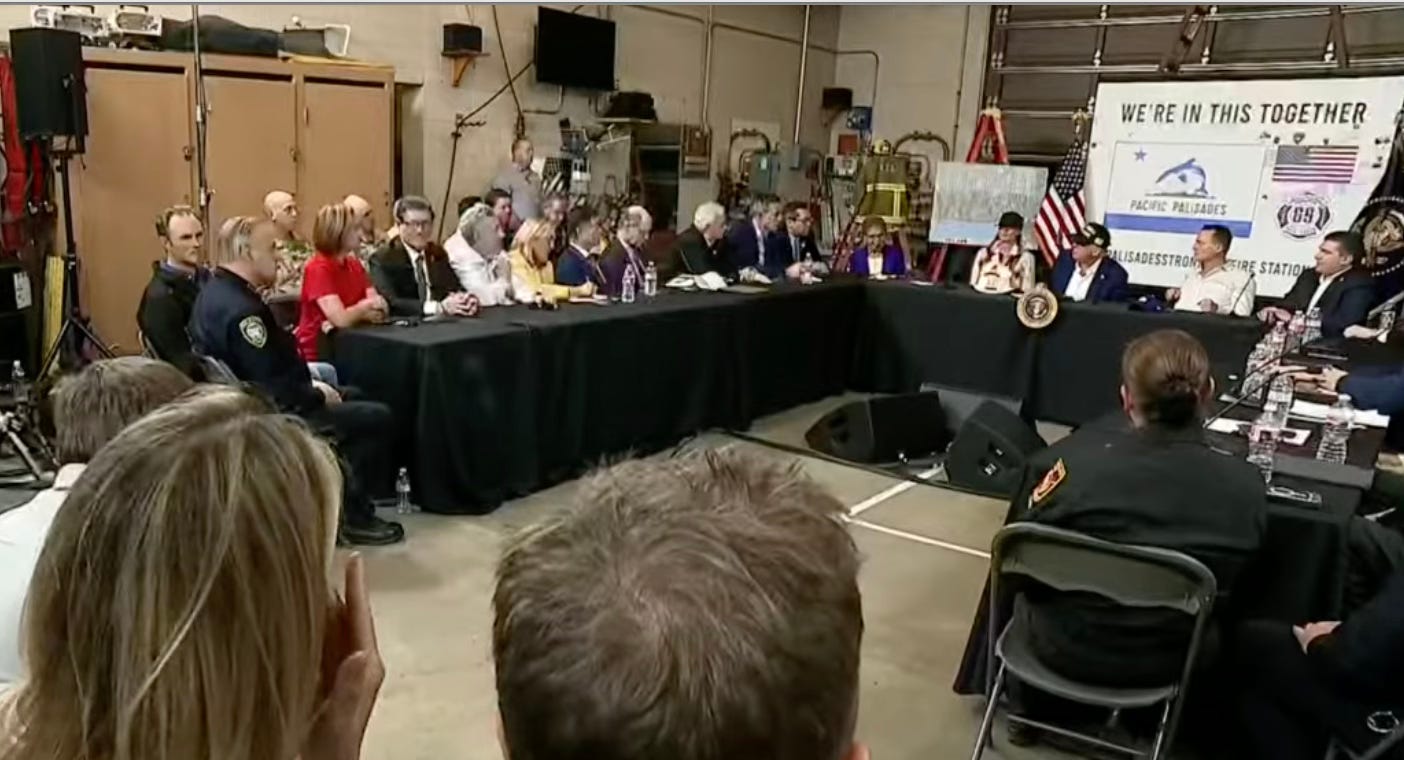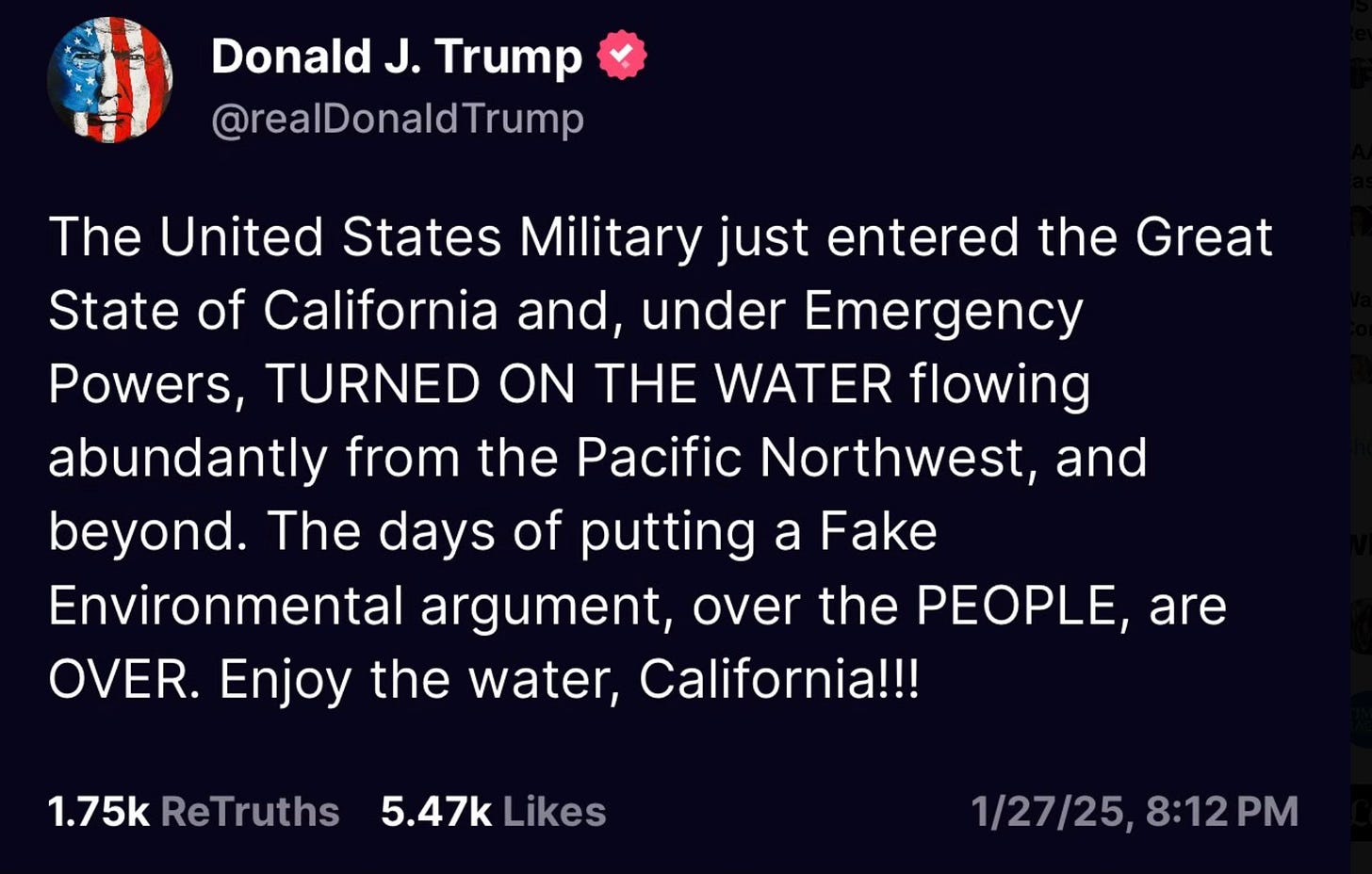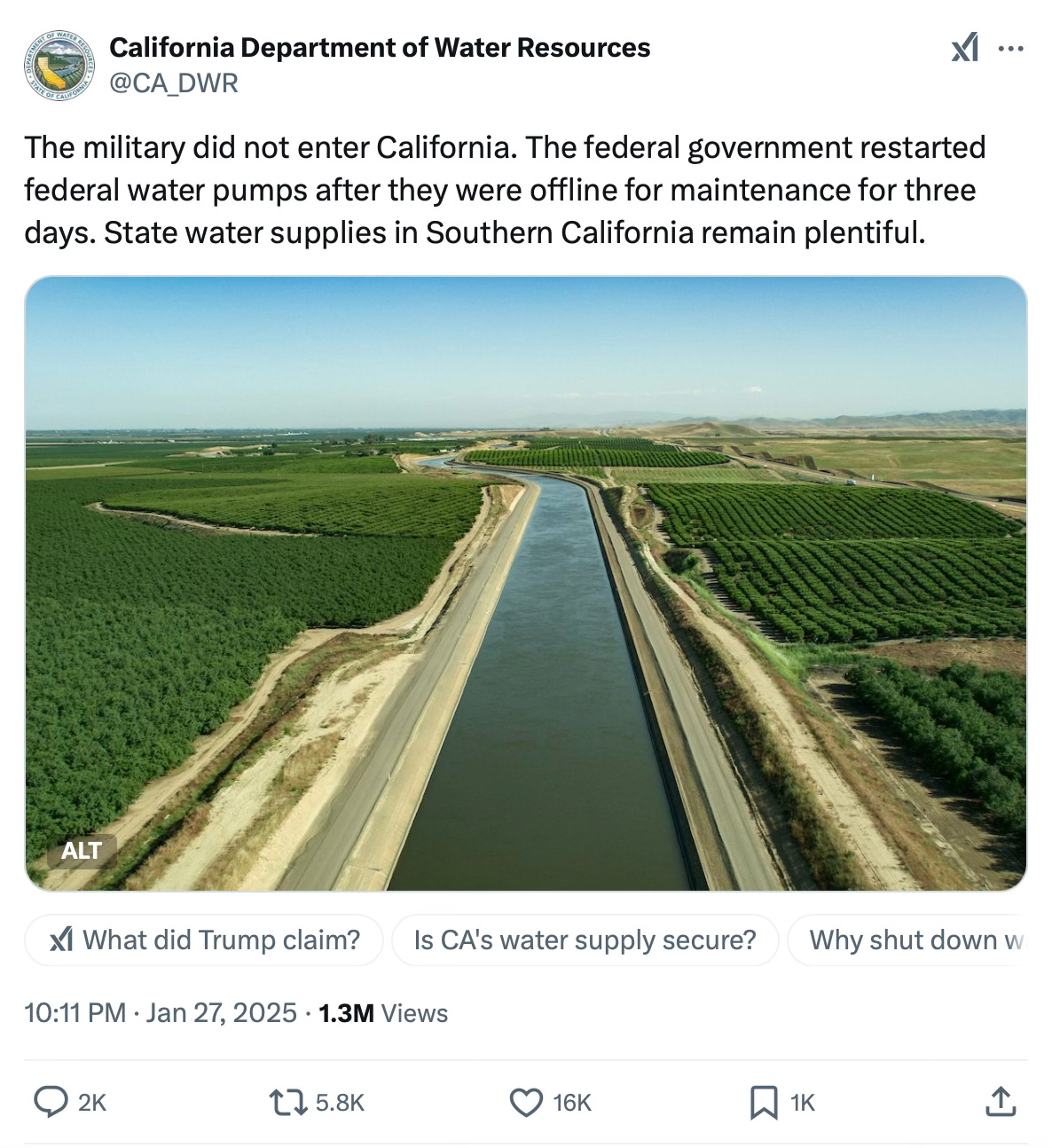The bully pulpit comes to California
President Trump used his visit to California to present an image he wanted, and many bought it
It was late Friday night when a friend in California texted: “Trump's fire press conference was encouraging! Did … you watch? I’m being serious actually!”
I wasn’t surprised to get the text. I watched President Trump speak live. His remarks were designed to have that effect.
In an hour-plus long roundtable meeting with local, state and federal officials — complete with a cheering section — President Trump, local leaders and White House invited guests discussed everything from water policy to regulatory bodies, to how quickly they can coordinate a rebuild.
In many ways it was different than what is expected in a post-disaster Presidential visit.
Instead of a tour and condolences, it was more like a challenge. With opening remarks and then an engagement style event, President Trump pressed, specifically on Democratic leaders (many who had already promised to do everything they could to rebuild quickly): Why can’t you move quicker, get things done.
And yet in many ways it had elements of what every administration does: An event designed with the power of the Presidency and orchestrated stagecraft, with selected perspectives included.

No ‘Golden Era’ without the ‘Golden State’
California is home to at least one in eight Americans. There are, in fact, more registered Republicans in the state of California (more than 5 million in October 2024) than there are people in about half of the country’s other states.
California is also considered a donor state to the Federal Government, meaning that it sends more federal tax dollars to the federal budget than it receives in aid from the federal government. It is one of a few states to fit that qualification.
President Trump prioritized visiting the state of California quickly as he took office. As the state reels from its most expensive disaster in California’s history, local officials extended invitations early to the President to cooperate for a rebuild.
California Gov. Gavin Newsom, who was not invited to the roundtable, met the President when he landed in the state. The two pledged to work together in this recovery.
The President pledged to cut federal permits, challenge any agency that stood in the way of the rebuild, and fight for the right to rebuild — even a little bigger, he said. President Trump pledged that he was there for the long haul and that there was no “Golden Era” without the “Golden State.”
But how he delivered that message is what piqued my interest.
Instead of the tour and traditional press conference that might follow a disaster, the White House built a roundtable meeting with many officials who are still responsible for the ongoing response. And invited guests.
Bully Pulpit
When you run events for the White House, as I did for years for President Obama, you realize the power in how you design an event. You can create home court advantage wherever you go. The invitations extended, the speaking time and who gets it, the optics of a picture. President Trump, who is a master of marketing, clearly understands this, and so does his team. He comes from the world of reality TV.
When a Breitbart reporter happened to be sitting next to Los Angeles County Supervisor Kathryn Barger, some might wonder how that happened. I know he was invited, and likely even given the seat in a chart.
He had raised his hands several times before he began speaking. He first asked a question about insurance and then immediately went into a bit of a diatribe.
“We need the money from the federal government. But I also understand Americans who are tired of spending money on California and disasters happen,” Breitbart reporter Joel Pollak said. (Pollak omitted the fact that California is a donor state, has sent more than its share of tax dollars to the federal government, and that all states qualify for federal aid after a disaster.)
Pollak continued: “And the California government passes $50 million to oppose your policies so they have $50 million for that, but not for moving people into rental homes or helping people relocate or rebuild.” (Again omitted: California did recently have a special session in which it pledged money to fight federal policies that differ with state and federal law, but Pollak failed to acknowledge that at that session they also passed $2.5 billion specifically for fire relief.)
Pollak offered an unusually prescriptive idea for a member of the press: “I would like to ask you to follow the 9/11 commission precedent and appoint a special master to watch the money, to make sure that every federal dollar that gets spent here is spent on fire relief and rebuilding and not on everything else.” (Oversight of funding is something most Americans can agree on, which is why it’s interesting that in that same night, Trump fired many federal officials specifically charged with oversight of spending — 18 inspectors general in all — without the mandatory notice to Congress.)
President Trump at the event said: “Good idea.”
Believing
For a viewer watching the roundtable Friday, particularly one who loves our Wild West and wants a quick rebuild, the President’s message was alluring. He said he was going to cut all federal regulations, he was going to quickly move, and that it was California’s nonsense policies that led to this situation.
If you’re inclined to believe the messenger, you will.
But gone from the White House’s presentation was facts. The President said California just needed to come to its senses and turn on the “very large faucet” to get water flowing.
Even when I looked to Breitbart I couldn’t find a story on where this elusive spigot is — supposedly in Canada — the one President Trump promised to turn on. Instead Breitbart had a story today about how President Trump posted that he sent the Military to California to restore water rights, and how California said that’s not true. In this moment, who you believe will greatly alter what you view as true.






